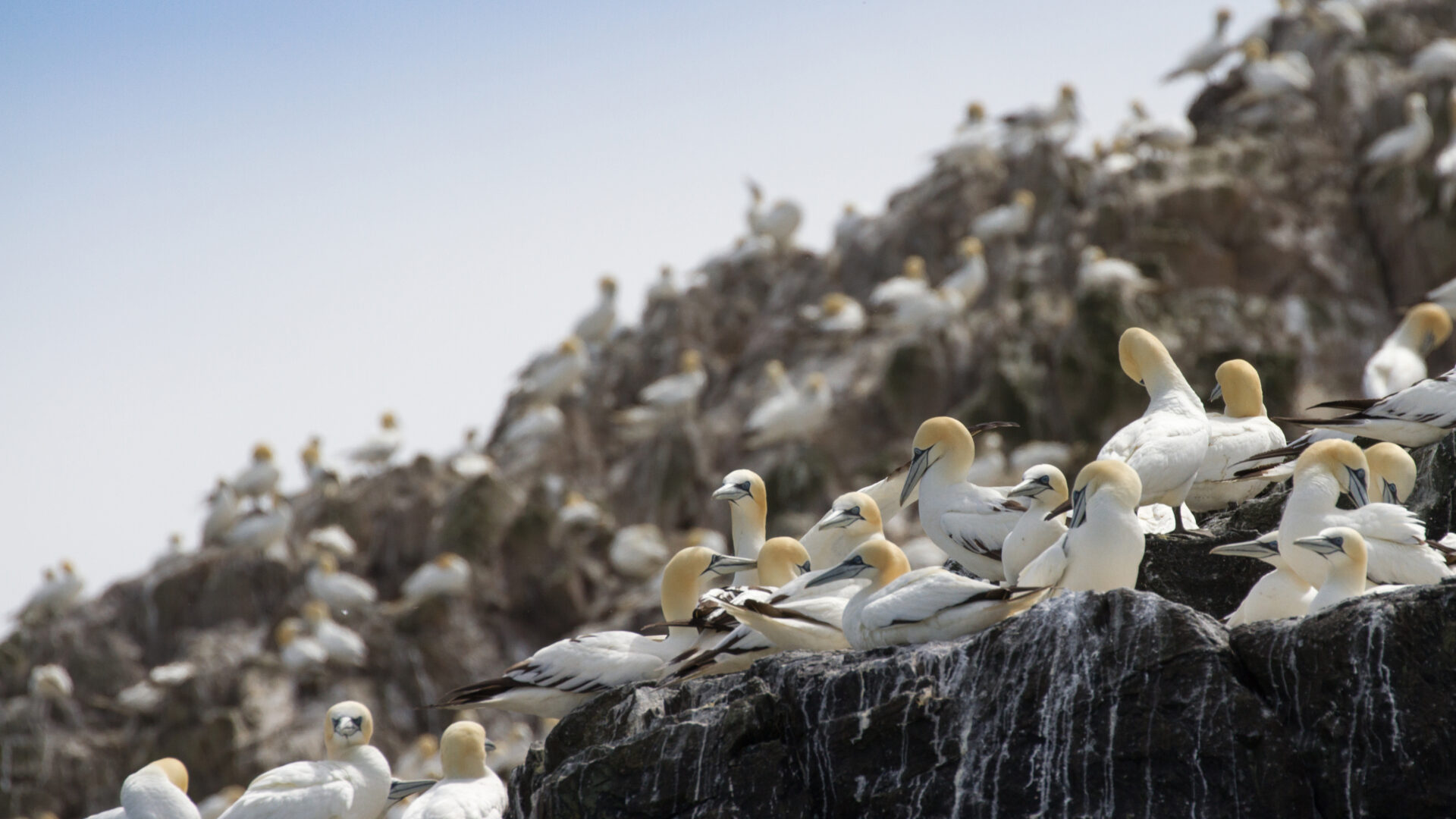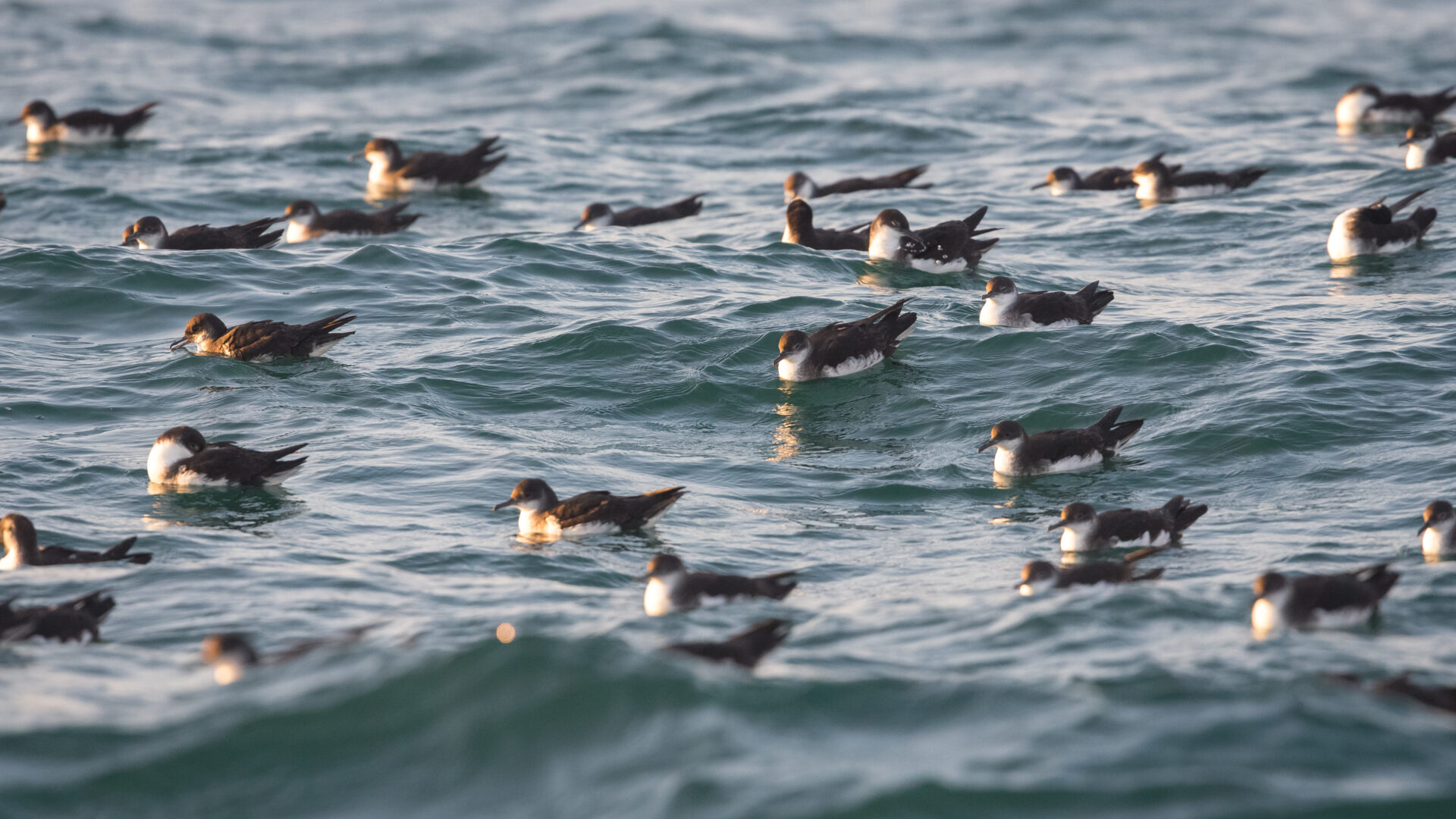
Look Wild: Seabirds of Pembrokeshire
-
Date posted: 23/05/2024
-
Time to read: 8 minutes
The nutrient rich waters off the Pembrokeshire Coast attract a wealth of wildlife to the sea, the shore, the cliffs and the sky above, making it one of the best places in Europe for marine wildlife.
You know that spring has arrived in Pembrokeshire when your senses are hit with the scents and sounds of thousands and thousands of sea birds, including Razorbills – our Pembrokeshire Coast National Park logo, guillemots, gannets, Manx shearwaters – and of course the clown of the sea – the puffin! Many have travelled thousands of miles to breed on narrow rock ledges around the coast and underground burrows on the offshore islands. Outbreaks of avian flu in recent years have had a devastating effect on seabird populations, especially northern gannets. Grassholm Island, once home to the fourth largest colony of northern gannets, has seen a drop in population from 34,491 nests in 2022 to 16,482 last year. It’s not all bad news though – Skomer Island is home to the world’s largest colony of Manx shearwaters, with over 300,000 birds and the puffin population on Skomer has increased to over 40,000 birds – bucking the trend for puffin numbers elsewhere and for seabirds in general.


Viewing Tips
The best time to see them is between May and July – their holiday in Pembrokeshire is not necessarily timed to coincide with yours! Seabirds are sensitive creatures and are best observed from a distance, both from land and sea. Move away if you observe head turning, head craning and wing flapping. Guillemots and razorbills incubate their eggs on their feet. If they are scared off the ledges and take flight, their egg will fall and be destroyed. Photo: Razorbill © PCNPA

Be aware of any access restrictions. Pembrokeshire is also renowned for its fantastic sea cliff climbing, with some of the best routes in the UK. There are agreed climbing restrictions in place between March and August to protect nesting and feeding sites for seabirds.
Visiting a western headland on a clear summer evening gives you the opportunity to witness thousands of Manx shearwaters gathering on the water and flying back to Skomer in the dusk. If you want to take photos to upload as observations for the LookWild project and you don’t have a big zoom on your camera, you can take a picture through your binoculars! Photo: Puffin © PCNPA
Fun Facts!
- Puffins can hold up to 100 sand eels in their mouths at once.
- Gannets are the largest seabird in the north Atlantic and can dive from 100 feet in the air at speeds of up to 60 miles per hour.
- The breeding territory of a guillemot is as small as the space it stands in.
- Fulmars scare off any unwanted visitors by vomiting a nasty smelly oil onto them.
If you’ve been inspired to get out into nature, you can share any photos or observations with us and get featured on our social or our newsletter! Send your observations to connect@nationalparks.uk
Join iNaturalist and start identifying nature near you today! LookWild is a brilliant citizen science project that helps contribute to our data and knowledge of wildlife and habitat health across the UK.
This blog was written by Rebecca Evansat Pembrokeshire Coast National Park.
